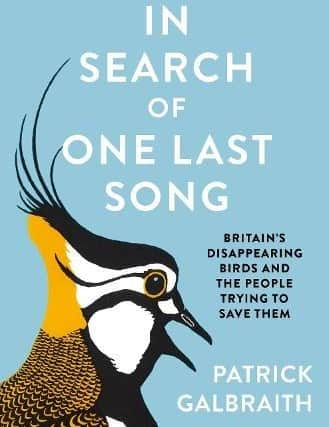Book review: In Search of One Last Song, by Patrick Galbraith


Whether or not the so-called New Nature Writing has an identifiable year zero is up for debate, but the genre was perhaps most effectively defined in 2008, when Granta brought out a special New Nature Writing-themed edition. The writers puffed on the cover of that volume included Kathleen Jamie, Robert Macfarlane and Richard Mabey. In his introduction, editor Jason Cowley observed that that the works selected all shared “a sense that we are devouring our world", and in response, he suggested, the writers in question “don’t simply want to walk into the wild, to rhapsodize and commune: they aspire to see with a scientific eye and write with literary effect.”
That combination still defines the best New Nature Writing today, but as the genre has swelled, there have inevitably been some for whom rhapsodizing and communing takes priority. Happily, however, Edinburgh-born Patrick Galbraith is a New Nature Writer of the old school: one who combines a detailed knowledge of his subject with a style that is at once evocative and precise.
Advertisement
Hide AdHis book's subtitle is "Britain's Disappearing Birds and the People Trying to Save Them" and, while the birds he goes in search of are the focus ("it dawned on me," he writes in his introduction, "that if I didn't hear a nightingale, a turtle dove or a capercaillie soon, I probably never would") the people he meets in his efforts to encounter them provide much of the interest.


On the lookout for nightingales in Suffolk, he goes stalking with marine turned private security guard Jim, who merrily shoots around 100 muntjack deer each year for the Suffolk Wildlife Trust. His goal: to allow an understory of hawthorn and bramble to develop – vital cover for ground-nesting birds. On the trail of Lapwings in Manchester, he undertakes an urban bike safari with clubbing and birding enthusiast James Walsh, who shows him the lapwings' "last stronghold" in the city, near a sewage works, and enthuses about the "immersive" nature of bird-watching on acid. On the Seafield Estate near Aviemore, meanwhile, he seeks out Capercaillie with gamekeeper Ewan Archer, who has seen numbers dwindle alarmingly during his 30 years on the job, and – surprisingly – describes RSPB Abernethy as a “shocker" of a neighbour, because of their apparent refusal to cull predators.
These various encounters (and they are very various) are written up with a forensic eye for detail, but also an admirable objectivity. As a result, rather than coming away with any overarching sense of what the author thinks must be done to preserve Britain’s endangered birds, the reader is left instead with a sense of the dizzying complexity of conservation efforts in these islands – a dense patchwork of different approaches, some complimentary, some not, but all well-meaning.
In terms of both scope and execution, this book is a hugely impressive achievement, and it will be fascinating to see where Gabraith goes from here.
In Search of One Last Song, by Patrick Galbraith, William Collins, £18.99